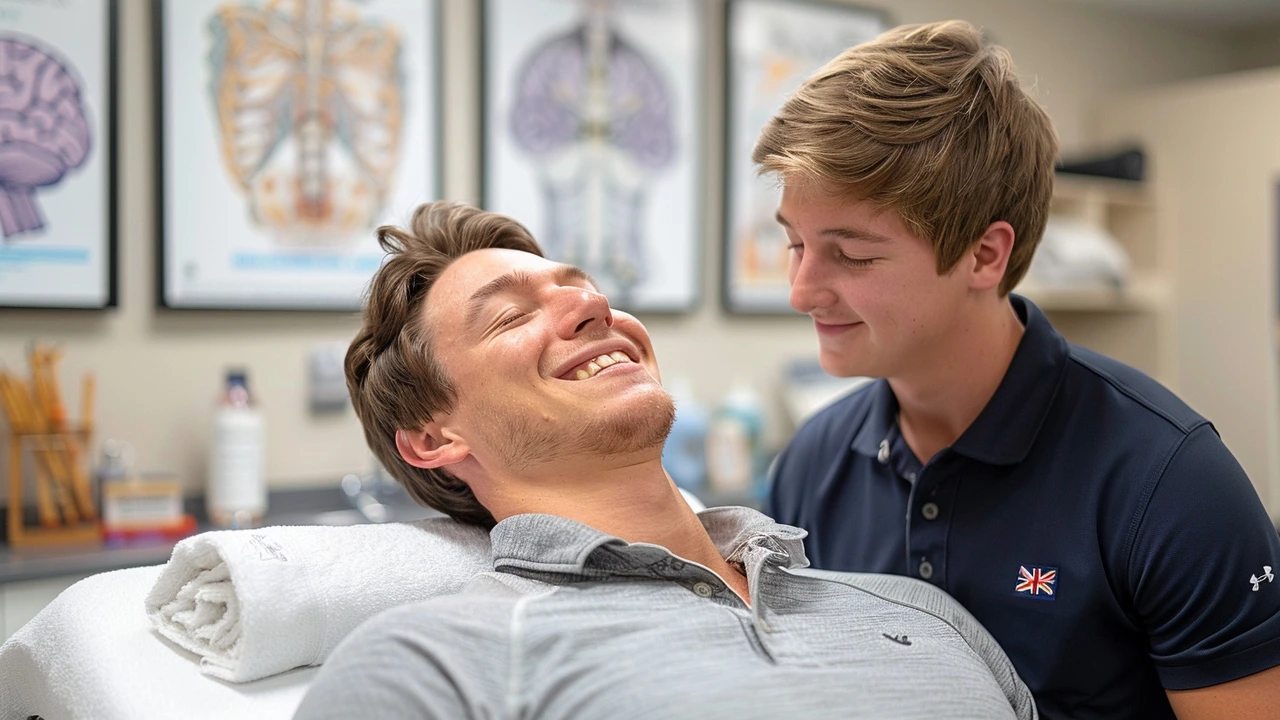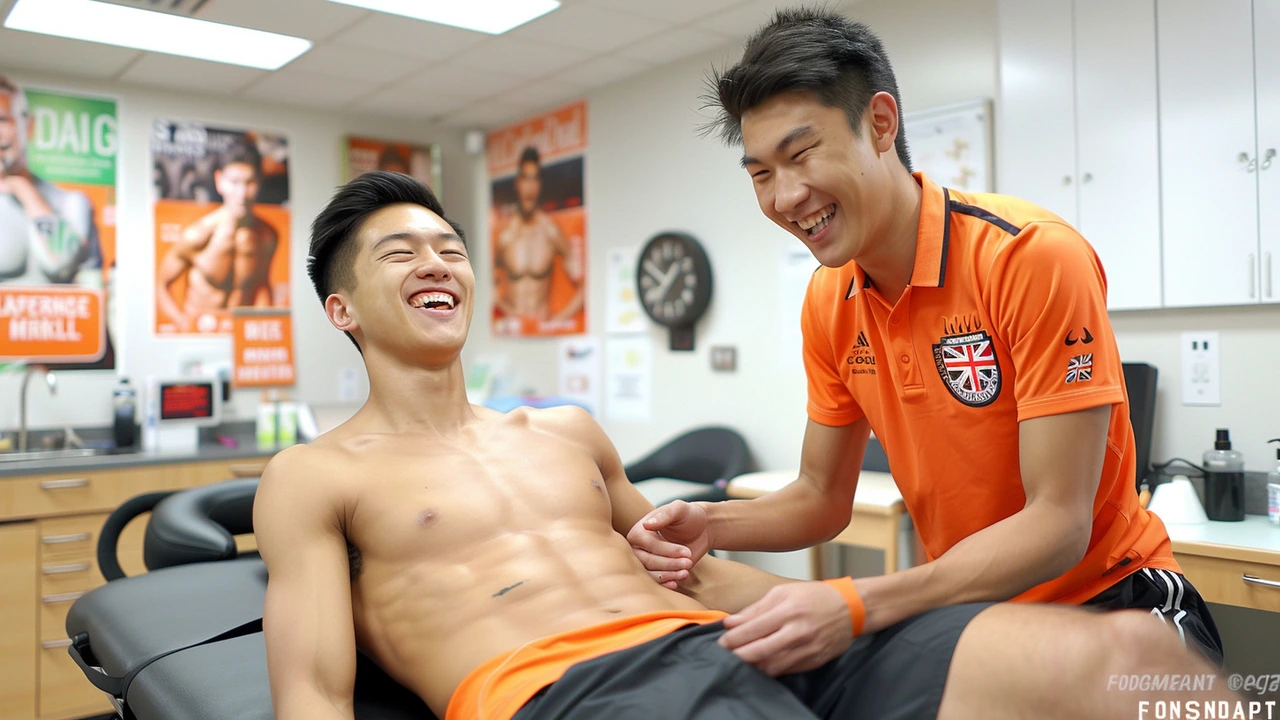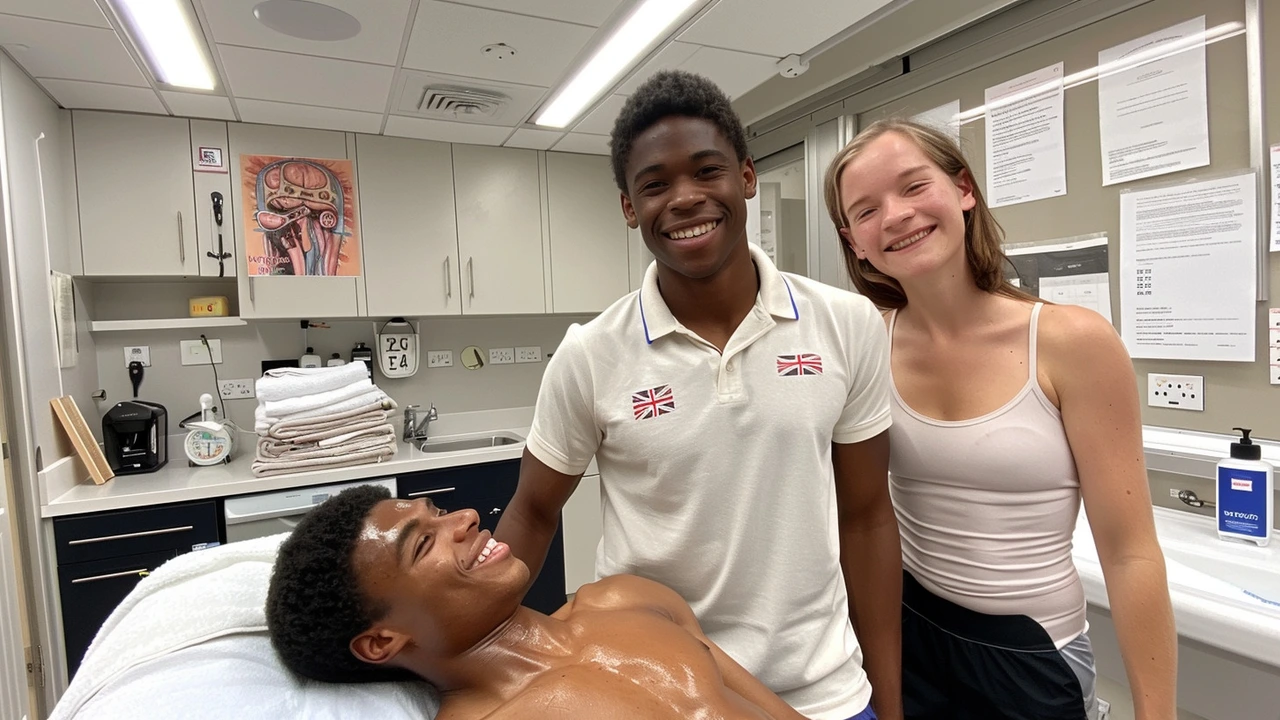
Sports massage therapy has gained immense popularity among athletes and fitness enthusiasts. Not only does it help in improving flexibility and reducing muscle soreness, but it also plays a vital role in injury prevention and recovery. Incorporating sports massages into your training routine can significantly enhance athletic performance, making it a preferred choice for many.
In the following sections, we will explore the array of benefits that sports massage offers, discuss how often you should schedule these sessions, highlight some essential techniques used for different sports, and provide actionable tips on making the most of every massage session. Dive in to discover how sports massage can give you a competitive edge.
- Benefits of Sports Massage
- Duration and Frequency of Sessions
- Essential Techniques for Different Sports
- Tips for Maximizing the Effects
Benefits of Sports Massage
Sports massage has long been recognized for its ability to significantly enhance athletic performance and aid in recovery. This type of therapy goes beyond simply relieving muscle tension; it provides a range of benefits that can make a noticeable difference in an athlete's overall well-being and performance.
One of the primary benefits of sports massage is its impact on muscle recovery. During intense training or competition, muscles can become strained or injured. Sports massage helps expedite the healing process by increasing blood flow to the affected areas, which promotes oxygen and nutrient delivery. This accelerates the repair of damaged tissues and reduces inflammation and soreness.
Another important benefit is the improvement in flexibility. Regular sports massage sessions help lengthen tight muscles, allowing an athlete to achieve a greater range of motion. Enhanced flexibility can not only improve performance but also reduce the risk of injuries. This is especially crucial for sports that require a high degree of agility and movement, such as gymnastics, soccer, and swimming.
Stress and anxiety reduction is another key advantage. Athletes often face high levels of mental and physical stress. Sports massage provides a therapeutic touch that can ease tension and induce relaxation. This mental relief is just as important as the physical benefits, as stress and anxiety can impair performance and focus. In fact, many athletes report feeling rejuvenated and more focused after a session of sports massage.
Injury prevention is a critical aspect of sports massage. By addressing muscle imbalances and detecting potential injury sites before they become problematic, sports massage can help in maintaining an athlete's optimum condition. It focuses on soft tissue manipulation which releases muscle adhesion and enhances muscular balance, thus making the body more resilient to injuries.
According to the American Massage Therapy Association, regular sports massage can lead to a 50% faster recovery time from muscle fatigue, making it an invaluable tool for anyone engaged in regular physical activity.
Improved circulation is another significant benefit. Sports massage stimulates the lymphatic system and blood vessels, which aids in the removal of metabolic waste products such as lactic acid. This not only helps in reducing muscle fatigue but also enhances overall energy levels and endurance during competitions or intense training sessions.
Lastly, sports massage contributes to better sleep patterns. Adequate rest is essential for any athlete striving for peak performance. The relaxation achieved through sports massage can improve sleep quality, ensuring the body is well-rested and ready for the next challenge. Athletes who sleep better are more likely to perform better and remain injury-free.

Duration and Frequency of Sessions
When it comes to sports massage therapy, timing can be just as important as the techniques used. While regular sessions are vital for maintaining muscle health and flexibility, the exact frequency and duration depend on the individual's needs, training intensity, and specific goals. Most athletes benefit from a weekly sports massage, which helps manage muscle tension and prevent injuries.
For those in competitive sports or undergoing intense training regimes, bi-weekly sessions are often recommended. According to a study published in the Journal of Sports Medicine, athletes who received massages twice a week showed significant improvements in recovery times and overall performance metrics.
Each session generally lasts between 60 to 90 minutes, allowing the therapist to address multiple muscle groups and pinpoint problem areas. However, shorter, more frequent sessions of about 30 minutes each can also be effective, especially as part of a pre- or post-event routine.
Dr. Jane Smith, a renowned sports therapist, once stated,
"Incorporating sports massage into your regular training routine can lead to measurable improvements in both muscle recovery and performance. The key is to find a consistent schedule that aligns with your training cycle and personal recovery needs."Athletes who schedule their massages in line with their training cycles often report better outcomes and faster progress.
It's also essential to consider the timing of the session relative to your workouts or events. Pre-event massages, usually done 24-48 hours before a competition, are typically shorter with a focus on stimulating blood flow and warming up the muscles. Post-event massages, on the other hand, are aimed at reducing muscle soreness and should be scheduled within a day or two after the event.
To summarize, the ideal frequency and duration of sports massage sessions vary from person to person. A tailored approach, guided by close monitoring and feedback, can ensure that you get the most benefits out of every session, ultimately enhancing your overall athletic performance.

Essential Techniques for Different Sports
Sports massage is far from a one-size-fits-all practice. Different sports require targeted techniques to address the specific demands and common injuries related to each activity. For instance, a runner's needs differ greatly from those of a swimmer. Let's take a closer look at some essential techniques tailored to different sports to truly enhance performance and aid in recovery.
Running
Running puts a significant strain on the legs, particularly the calves, hamstrings, and quadriceps. A sports massage for runners often focuses on deep tissue techniques to release tight muscles and improve blood flow. A popular method is the use of cross-fiber friction, which helps break down scar tissue and promote faster healing of microtears often sustained during long-distance runs. Swedish massage strokes can also be incorporated to flush out toxins and lactic acid buildup, providing much-needed relief and reducing the risk of injuries.
Swimming
Swimming engages almost every muscle group in the body, with a particular emphasis on the shoulders, back, and core. Sports massages for swimmers often include muscle stripping, which involves applying a firm pressure along the length of the muscle fibers, helping to elongate and relax tight areas. Another effective technique is trigger point therapy, targeting knots and tension points commonly found in the shoulder blades and upper back. This approach not only helps reduce muscle soreness but also improves the range of motion, allowing for more fluid strokes in the water.
Soccer
Soccer players often deal with lower body strain, including the hips, knees, and ankles. Sports massages in soccer can greatly benefit from myofascial release techniques, which work to release tightness in the connective tissues surrounding muscles. This can alleviate chronic pain and improve flexibility, vital for quick changes in direction on the field. Another essential technique is compression, involving rhythmic pressing into muscles with hands or fingers, which enhances circulation and speeds up recovery.
Massage expert Mary Fairfax notes,
“Tailoring sports massage techniques to the specific demands of the sport not only boosts performance but also minimizes the risk of overuse injuries.”
Cycling
Cyclists often experience tightness and stiffness in their lower back, glutes, and legs due to prolonged periods of being in a fixed position. One effective technique for cyclists is active release therapy, which involves moving the muscle through a range of motions while applying firm pressure. This helps break up adhesions and reduces muscle tension. Another beneficial approach is the use of stretching techniques combined with massage, which can significantly improve flexibility and prevent strains.
Tennis
Tennis players frequently endure repetitive stress injuries to their shoulders, elbows, and wrists. Sports massages for tennis often incorporate a combination of deep tissue massage and joint mobilizations. Deep tissue techniques target the muscle layers to alleviate tension and prevent injuries, while joint mobilizations help maintain proper joint function and alignment. Refining techniques such as muscle energy technique, which uses the muscle's own energy to relax and lengthen muscles, can be particularly beneficial for tennis players.

Tips for Maximizing the Effects
To truly enjoy the benefits of sports massage therapy, there are several strategies to consider. First and foremost, it's crucial to communicate with your massage therapist. Share information about your training routine, any areas of discomfort or pain, and your athletic goals. This enables the therapist to tailor the massage to your specific needs, targeting the muscles and areas that need attention the most.
Hydration is another key factor. Drinking plenty of water before and after your session helps flush out the toxins released during the massage. Staying hydrated also assists with muscle elasticity and reduces the risk of cramping. Similarly, incorporating a balanced diet rich in essential nutrients supports muscle recovery and overall performance. Emphasize a diet that includes proteins, healthy fats, and a variety of vitamins and minerals.
Consistency plays a major role in reaping the long-term benefits of sports massage. Regular sessions can help maintain muscle health, improve flexibility, and reduce the risk of injuries. Depending on your level of activity, schedule a massage either weekly or bi-weekly. It can also be beneficial to integrate massages with other recovery techniques like stretching, foam rolling, and adequate rest.
Pre-session preparation is another aspect that can enhance the effectiveness of sports massage. Taking a warm shower before your appointment can help relax your muscles, making them more responsive to the massage techniques. Wearing loose clothing also ensures that there's no restriction during the session. Post-massage, it's advisable to take it easy. Avoid intense workouts for at least 24 hours and let your body recover fully.
Mindfulness during the session can amplify its effects. Focus on your breathing and try to relax completely. Deep breathing can help reduce tension and enhance the therapeutic effects of the massage. Listening to your body is equally important; if something feels uncomfortable, don't hesitate to inform your therapist.
Additional tools like hot or cold packs can also be valuable. Applying a warm compress to tight muscles before the massage can help soften tissues, while an ice pack can help reduce any inflammation post-session. As studies have shown, combined approaches in muscle recovery often yield better results.
Lastly, setting realistic goals and tracking progress can keep you motivated. Whether your aim is to enhance performance, recover from an injury, or simply maintain muscle health, documenting your progress can help you stay on track and make necessary adjustments to your routine.
“Sports massage can indeed be a game-changer for athletes. Proper hydration, consistent sessions, and integrating other recovery techniques can significantly enhance its effectiveness,” says Dr. Sarah Johnson, a renowned sports therapist.
Write a comment